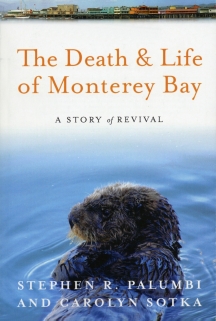Review of Mission Blue Documentary about Dr. Sylvia Earle
On August 15, 2014, Netflix began streaming a biographical documentary on Dr. Sylvia Earle called “Mission Blue.” Sylvia is the pre-eminent oceanographer of our time. She has logged over 7,000 hours underwater, and even walked beneath the ocean untethered to 1,250 feet! She is often called “Her Deepness.”
I have admired Sylvia for most of my life, as she once spoke at my elementary school close to where she lives in Oakland, California. I have read biographies of Sylvia, but none compare to this documentary. It covers her whole life, from growing up in New Jersey (where she was free to romp in the woods), to moving to Florida at age 12 (where she fell in love with the ocean), to today where she is a crusader against all the atrocities facing our oceans today. It not only covers her professional life, but it touches on her personal life including three marriages (and divorces) and being a working mother when it was not common. All women scientists today owe gratitude to Sylvia for blazing a trail on her way through a sexist society. She was often the only woman on an expedition and she endured headlines such as “Sylvia sails away with 70 men,” and for her time with five other aquanauts living underwater, the headline read, “6 women and only one hairdryer.”
Like her terrestrial counterpart, Dr. Jane Goodall, Sylvia travels up to 300 days a year. She is spreading a message of hope for the oceans and often says, “No Blue; No Green. No Oceans; No Us.” The oceans are the Earth’s life support system. They produce oxygen from marine plants, and absorb carbon dioxide from the atmosphere. The oceans are the life blood of the planet.
I highly recommend “Mission Blue” for anyone who streams movies through Netflix. You will not only learn about Sylvia’s amazing life, from her first set of SCUBA gear, to the deep sea submersibles she has help built, but also about the many changes happening to our ocean environment. There are breath-taking segments showing the ocean in all its beauty and splendor. It can be depressing at times, like seeing the sharks being finned alive, but overall the theme is “ocean optimism.” Sylvia recommends designating “Hope Spots” around the globe. In fact this was her TED wish in 2009. Less than 3% of the ocean is protected, compared to 12% of land that is protected. Sylvia’s wish is coming true, though she would like 20% of the ocean to be protected by 2020!



